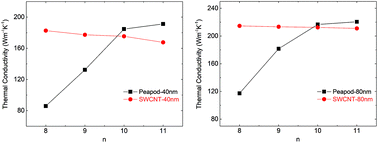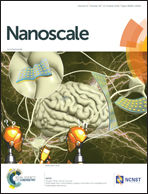Modulation of thermal conductivity in single-walled carbon nanotubes by fullerene encapsulation: enhancement or reduction?
Abstract
Fullerene encapsulation has been proven to be a powerful approach to enhance the mechanical and electronic properties of single-walled carbon nanotubes (SWCNTs). However, some discrepancies emerge in recent studies of the fullerene encapsulation effect on the thermal conductivity of SWCNTs. More specifically, most previous theoretical studies predicted slight enhancement in the thermal conductivity, but the recent experiment by Kodama et al. (Nat. Mat.16, 892, 2017) observed a clear reduction in the thermal conductivity of SWCNTs by fullerene encapsulation. We perform molecular dynamics simulations to revisit this issue, by comparatively investigating the thermal conductivity of the SWCNT (n, n) and the corresponding peapod (n, n) with n = 8, 9, 10, and 11. We find that the encapsulation can reduce the thermal conductivity of narrower SWCNTs with n = 8 and 9, but it can slightly enhance the thermal conductivity of thicker SWCNTs with n = 10 and 11. The underlying mechanisms for these opposite effects are explored by analyzing the encapsulation induced structural deformation and the variation in the phonon dispersion of the SWCNT. We illustrate that the reduction effect observed in the recent experiment is related to the mechanism for reduction of the thermal conductivity for narrower SWCNTs here.



 Please wait while we load your content...
Please wait while we load your content...